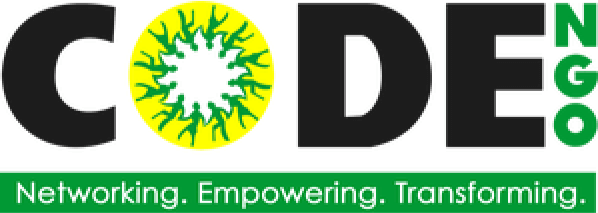
CODE-NGO commits to be the trusted national voice of civil society and to advance the capacity of civil society organizations (CSOs) for transformative leadership. Specifically, it envisions itself as a competent and credible network of development CSOs sustaining its influence in public policy and more effectively responding to development challenges affecting communities.
Therefore, credible/trusted, relevant, diverse, timely, and accessible communication reaching various audiences is considered important in meeting CODE-NGO’s goals. Strategic Communications aims to describe key approaches that espouse principles to be applied to a broad range of communications functions.
Communications Framework
This year, the Communications Framework was developed by the Secretariat to inform, educate, and influence stakeholders and target audiences on public policy formulation, programming, implementation and development challenges; effective governance and management of CODE-NGO; and strengthening engagement among the CODE-NGO Board, Secretariat, and member networks. It is still due for the Board’s approval.
The program officers conducted adhoc meetings in order to fine tune the communications work. Each program officer was also equipped with the communications plan for them to create their own content per program.
Website and E-Newsletters
Monthly e-newsletters with a total of 50 articles were created for the network’s website, www.code-ngo.org, disseminated to CODE-NGO’s partners and member networks globally. In addition, four articles were published on the Center for Humanitarian Learning and Innovation’s (CHLI) website, www.chli-asia. There was also more involvement of member networks in the production of these articles for the website.
Knowledge Products and Online Collaterals
Aside from the website, CODE-NGO’s collaterals were also promoted on social media (Facebook and YouTube). Member networks were encouraged to cross-promote the content in their respective online platforms. The event most promoted was CODE-NGO’s 30th Anniversary and Social Development Week.
Challenges and Limitations
With the ongoing pandemic, the Communications Officer was unable to visit communities to gather stories and capture photos first hand. She maximized the use of materials submitted by the MNs and reused some photos posted online.
Another challenge was the constantly-changing algorithm of social media channels. With Facebook prioritizing videos over photos, and these resources being scarce, it was not easy to promote the static online materials produced and published on Facebook.
Reflections and Lessons Learned
While working on the Communications Framework, the Communications Officer was reminded that working from the organization’s perspective is very important. The framework serves as the reference for all communication work of CODE-NGO. Telling CODENGO’s stories has to be grounded on purpose in order to have a streamlined communication strategy.
There is also no one-size fits all in communicating. The online world is fast-paced. There needs to be social listening and adapting to these changes for CODENGO’s communications to stay relevant. It is a huge job for one Communications Officer alone, so she is grateful for the support and participation of her fellow program officers and member network focals.
The Communications Program continues to connect to its target audience in this fast-paced digital age, with the goal to reach more readers nationally and globally, and instill the value of social development work to communities in need.
Posters from www.facebook.com/caucusofdevelopmentngonetworks



This article is part of the CODE-NGO Annual Report 2021.

You must be logged in to post a comment.